Collaboration lies at the heart of Liberty Trail AR
Zubr are experts when it comes to bringing history to life, with our work on the Liberty Trail AR suite demonstrating the power of augmented reality storytelling to bridge the past and present. Yet, none of our AR magic would be possible without the extensive research of our team and our partners, the American Battlefield Trust and South Carolina Battleground Preservation Trust.
Based in South Carolina, the Liberty Trail AR app and binoculars allow visitors to explore Revolutionary War battle sites in immersive detail. Open landscapes are transformed by our AR recreations of each battle, teeming with soldiers, ravaged campsites, and booming gunfire. Through collaboration with our partners, as well as conducting our own on-site explorations, we ensured every detail – from the uniforms of 18th-century infantry to the textures of fort walls – captured the essence of the period.
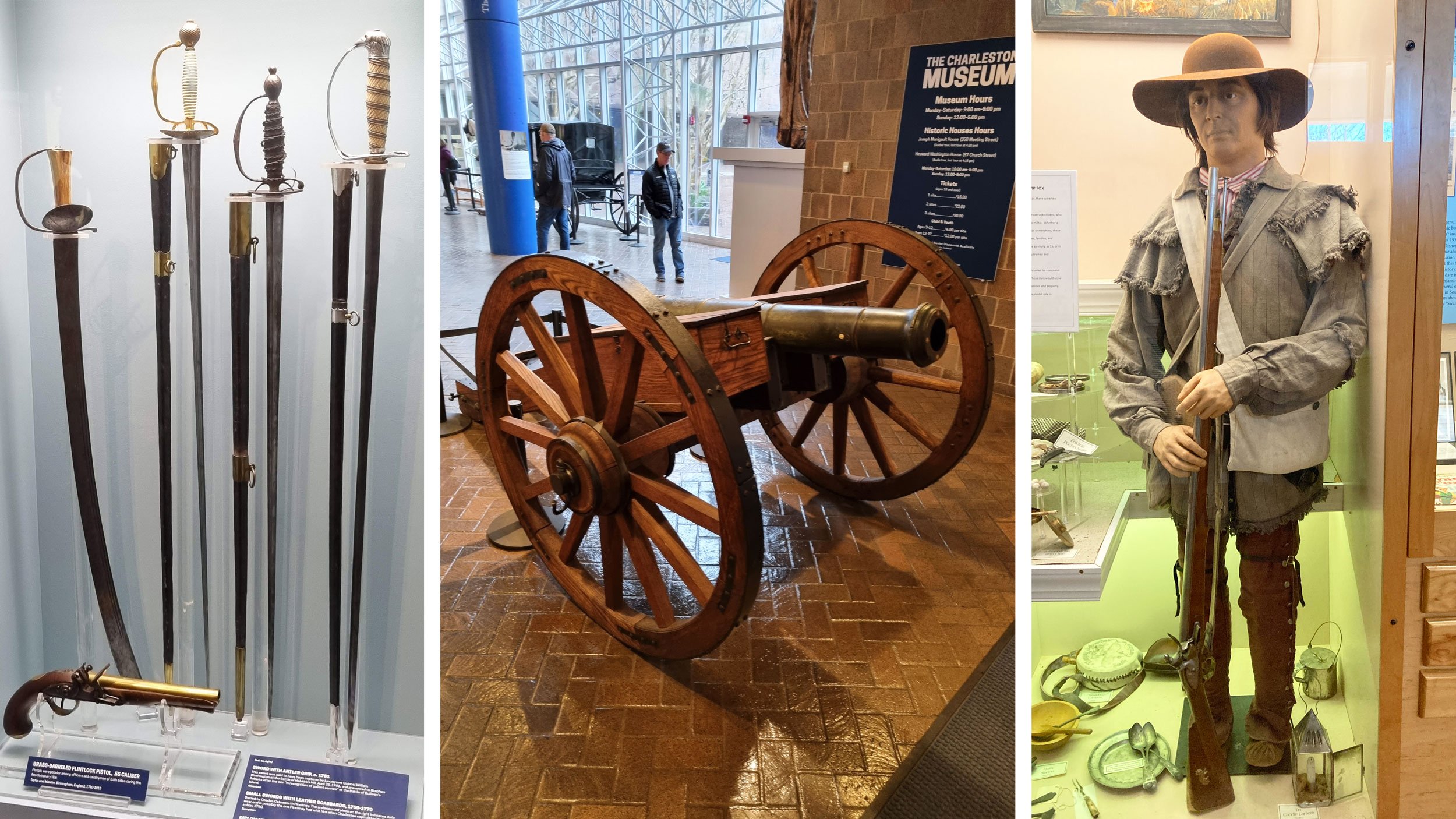
Laying the foundations with research
Given the rich historical background of each site, extensive research was required in order to deliver precisely modelled characters and landscapes which truly capture the essence of life in a Rev War fort. Zubr worked with a range of experts, including the late historian and SCBPT CEO, Doug Bostick, to whom we are particularly grateful for his expertise on the siege of Fort Watson. We also had the opportunity to work with Military Historian and Interim Executive Director of the South Carolina Battleground Preservation Trust, Rick Wise, who brought his love of military history and deep commitment to historical accuracy to the Liberty Trail Project. The insight of South Carolina’s knowledgeable historians offered an excellent jumping off point for the project, and guided our research and storytelling throughout.
Meanwhile, Zubr’s copywriter, Alex embarked on her own research in order to support the 3D team during the modelling process. Collating key information from the materials supplied by South Carolina’s experts, Alex created a series of research documents, allowing Zubr’s 3D artists to easily access the necessary historical references. This also involved research into the assorted uniforms worn by various infantry, the surrounding plant life in 18th Century South Carolina, and the style of period interiors in order to facilitate the design of each battle site.
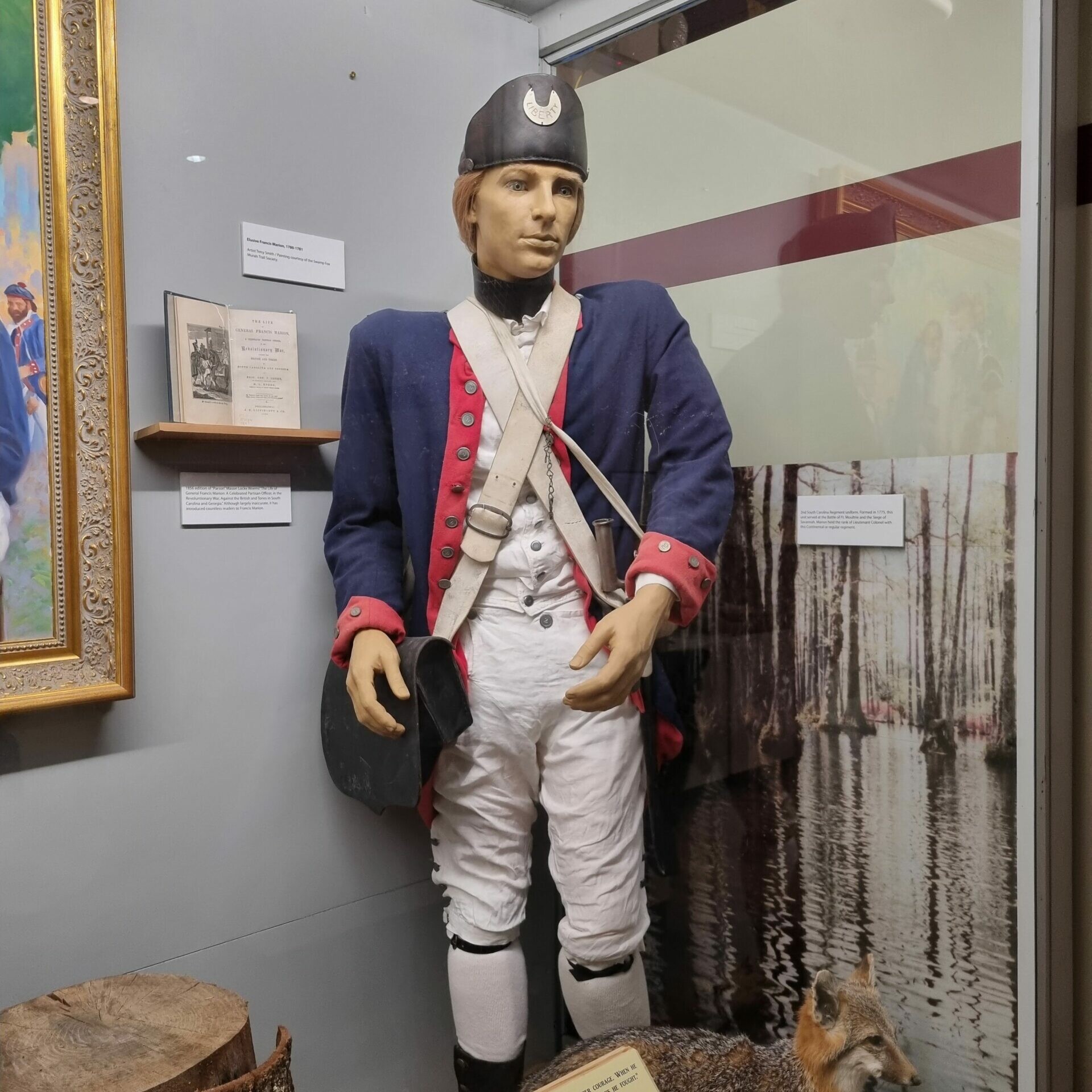
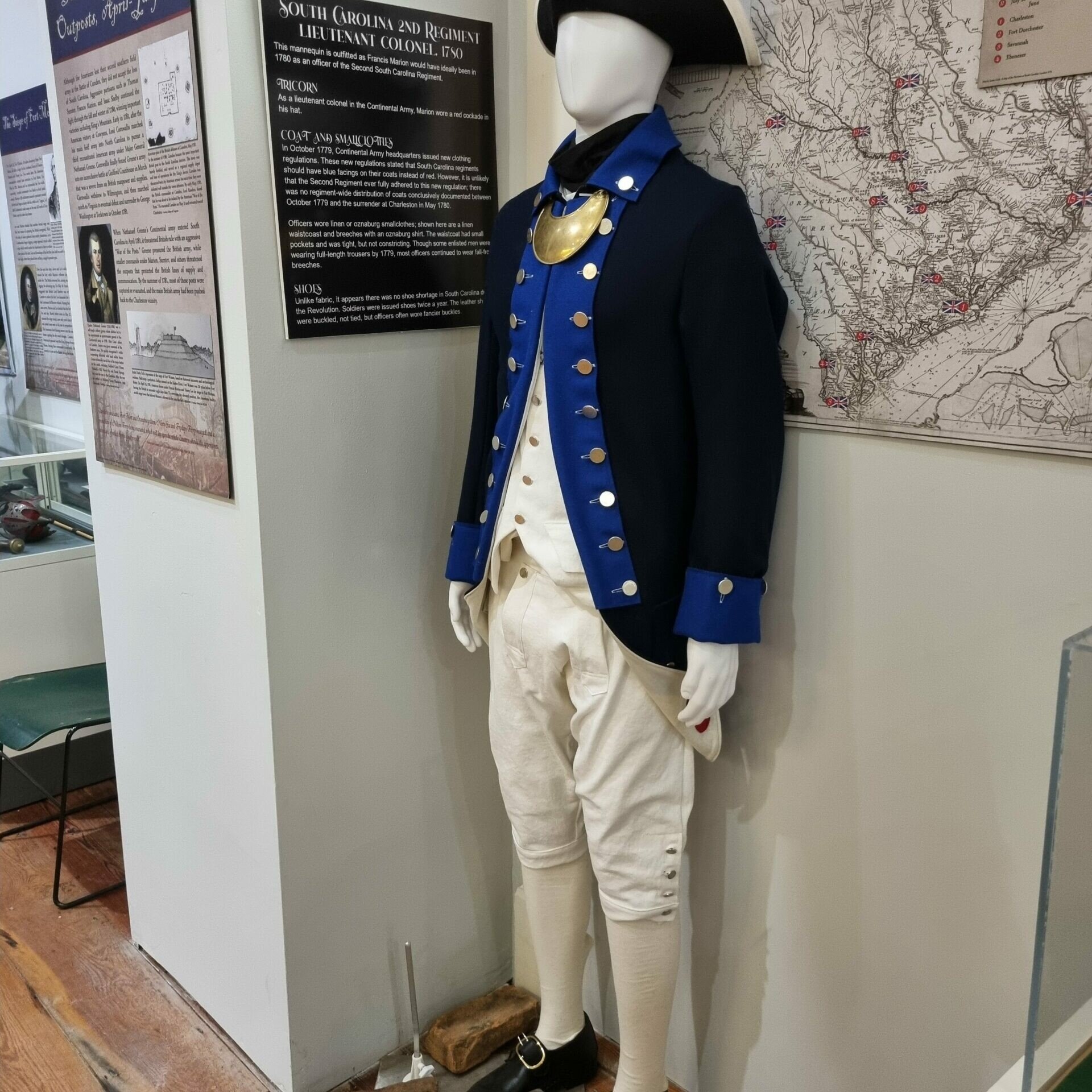
“Whilst out there, we took multiple photographs that we could use as a reference and manipulate to make more realistic textures for the app. Walking around the Fort Fair Lawn museum, it was really useful to get more details for set dressing.”
Joe Grocott, Lead 3D artist, Zubr
In memory of Doug
Reflecting on our time working together, Creative Producer Amy recalls fond memories of Doug.
“It’s impossible to sum up how inspiring and welcoming Doug Bostick was – in equal measure. Doug was our first point of contact on our first work trip to South Carolina, picking us up from the Charleston airport in a car he had rented to ensure we’d be as comfortable as possible.
The car was so huge that I couldn’t climb into it unassisted, much to Doug’s amusement. He drove us into the city, regaling us with local history and pointing out important historic landmarks on the drive to a nearby restaurant. We ate and he told us more about Charleston and his family. As a proud eighth generation Charlestonian, there didn’t seem to be much Doug didn’t know about Charleston’s history.”
“I felt almost guilty: who were we to come and share Revolutionary war history with people, when Doug had been preserving and sharing these stories long before I was born? It was humbling, but inspiring. Doug didn’t overwhelm you with knowledge or make you feel ashamed for not knowing something. He was a storyteller who enjoyed the telling of history as much as the knowing of it. He painted such rich pictures with his words that you could almost see Francis Marion creeping up on the unsuspecting Brits as he spoke. Being with Doug was like being able to see history around you…exactly what our app hoped to achieve.
Despite not being too tech-savvy, Doug was so positive about our work. He wanted younger people to see history the way he did, and believed augmented reality was a great way to engage them due to its ability to offer an alternate view of a real world location. His voice was powerful, his words vivid, his legacy momentous. It was a deep honour to work with him and spend time in his company.”
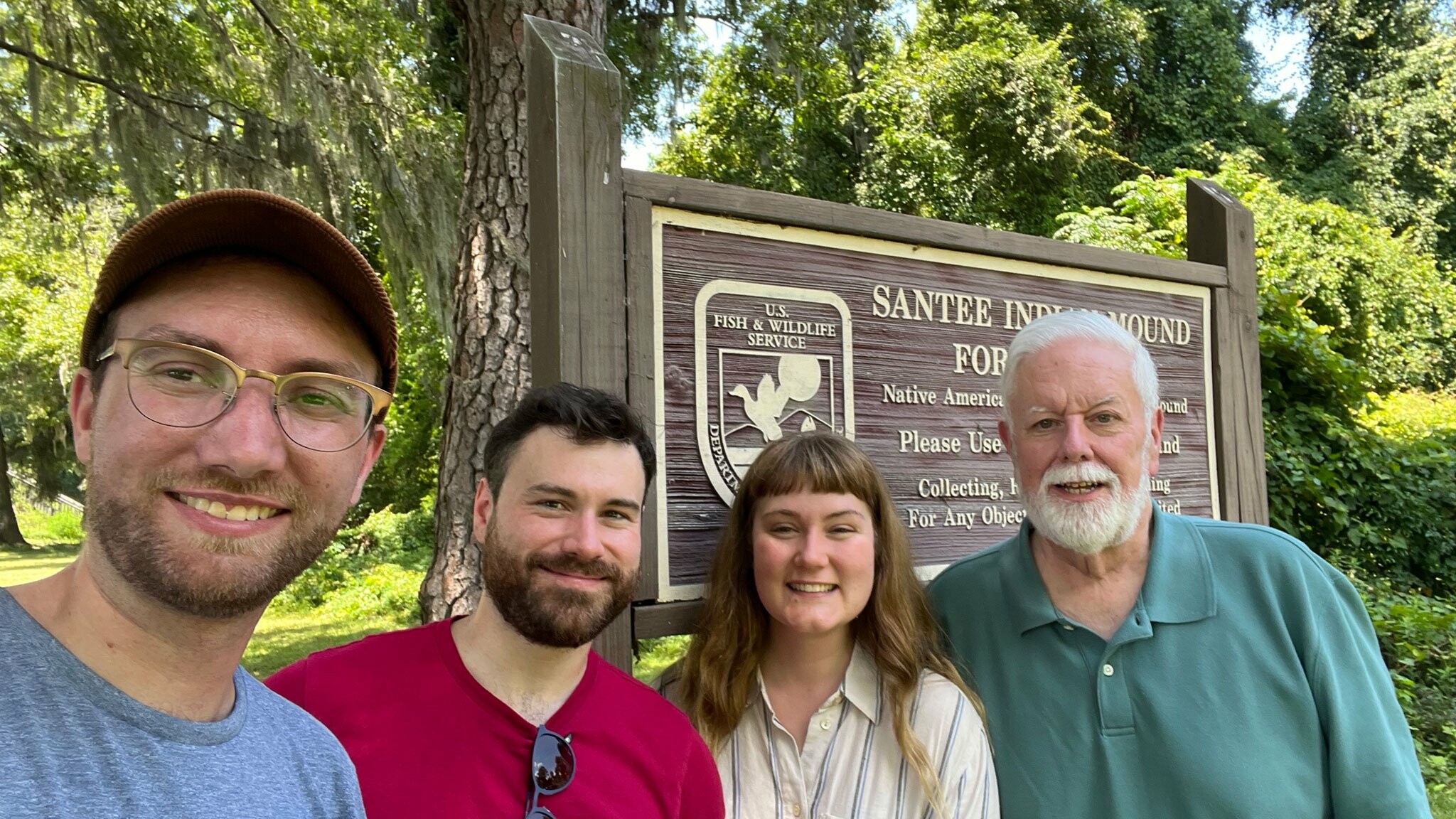
Navigating different time zones
Given the nature of our transatlantic partnership, we were faced with many challenges throughout this project, including the authentic voice over content for the Liberty Trail app. Tasked with creating audio content for the historical information within the app, including the character interactions and written passages which provide historical context for each battle site, we conferred with our South Carolina partners and eventually opted for an AI voice over service called Natural Reader.
This easy-to-use AI software allowed us to capture the southern drawl of the Patriot soldiers and the pithy cries of the Brits. With a range of preset voices to choose from, and the option to play around with the pitch, intonation, and so on, it wasn’t long before we found our Southern drawl. After exporting as a series of sound files, we added each voice over to the app.
Not only were these historical voices easy to generate, but they are equally easy to edit. Being able to make quick changes as opposed to booking in a voice actor was especially useful given the distance and time barriers between us and our partners, leaving less time to agree or converse over these decisions.

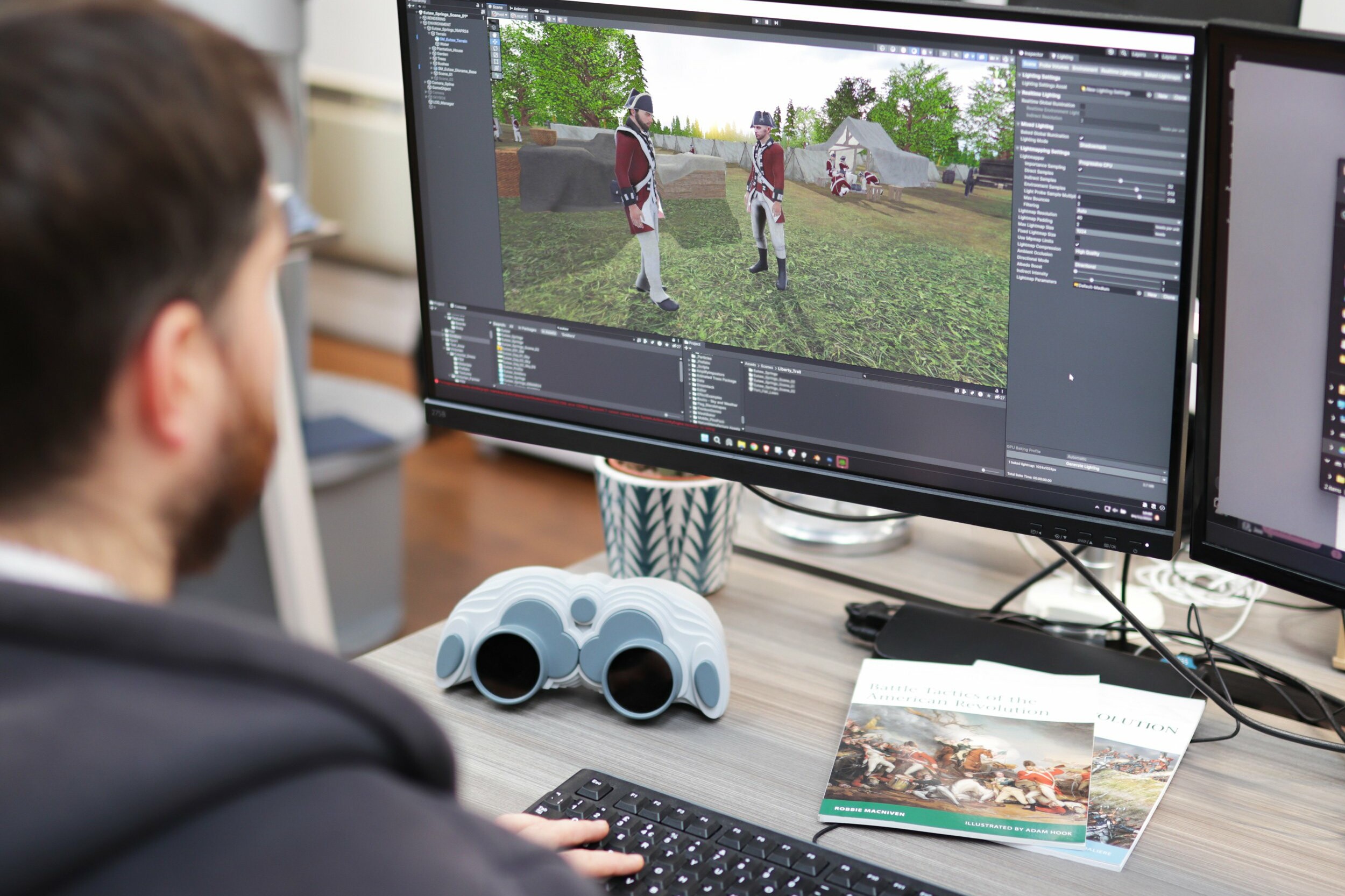
Zubr goes to South Carolina
Informing our 3D design work, Zubr embarked on three separate trips to the US to research each battle site. However, terrain challenges still persisted when the team visited the sites in person – even at one of the most preserved Revolutionary sites, Fort Fair Lawn.
Attending the Fort Fair Lawn site, the Zubr team soon discovered that off-site research conflicted with the exact dimensions of the site. The initial measurements had been gathered through written materials and satellite imagery, yet Zubr’s 3D artist Joe quickly realised the problem. Due to the site’s forest location, it was almost impossible to match up dimensions with satellite imagery; the onsite visit revealed that our 3D model matched up in one corner of the site but didn’t fully match up with the measurements of the site as a whole. The river – or trench – was the wrong width, so Joe got the tape measure out and later used those measurements to reimplement and resize the fort in 3D.
However, accurate measurements were not the only benefit of visiting in person. Joe recalls, “whilst out there, we took multiple photographs that we could use as a reference and manipulate to make more realistic textures for the app. Walking around the Fort Fair Lawn museum, it was really useful to get more details for set dressing.”
These on-site photos allowed Joe and Selwyn to get a better idea of the types of materials used during the 18th Century, such as woods and metals. The on-site trip served a greater purpose too, connecting the Zubr team with our US collaborators and the landscapes they’d been working on.
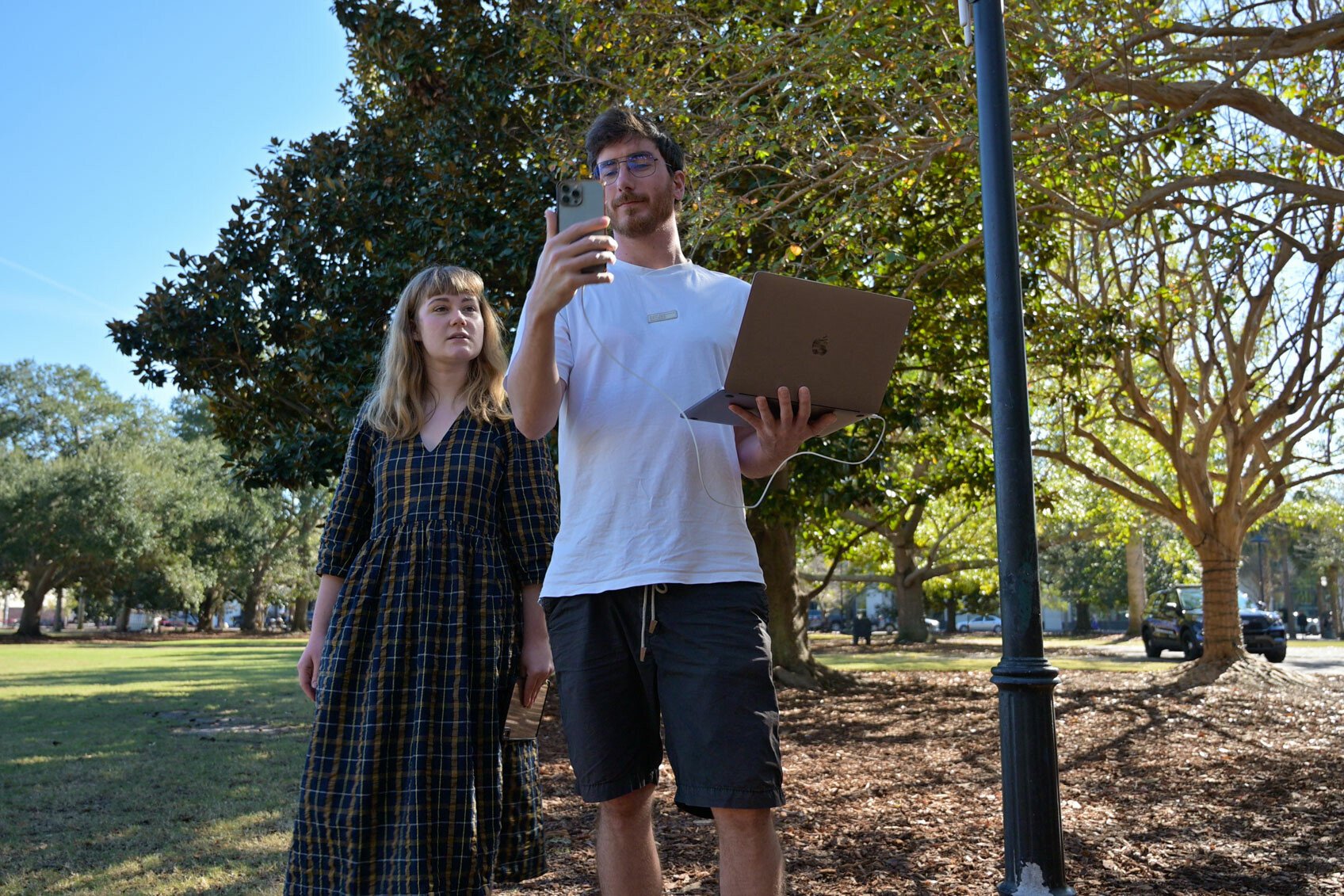
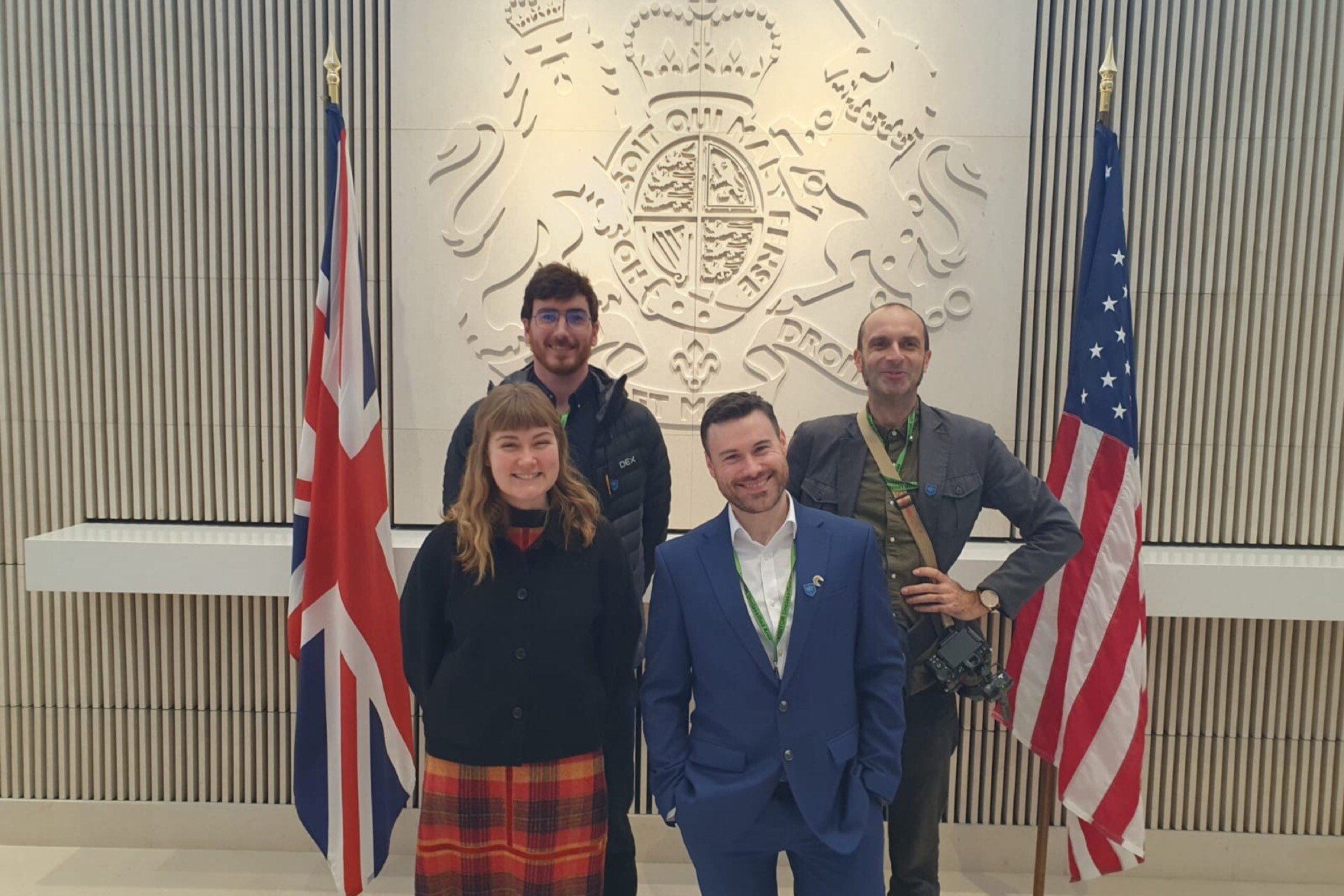
A visit to the British Embassy
This November, the Zubr team kicked off an exciting chapter in Washington, D.C., as part of a week-long journey to launch the Liberty Trail AR suite. Armed with fully charged devices and months of preparation, the Zubr team arrived midweek ready to bring history to life in the nation’s capital.
Thursday morning began with a final round of app testing – ensuring every 3D soldier, battlefield, and revolutionary detail was spot-on. Then it was off to the British Embassy for an unforgettable day of AR magic!
We were warmly welcomed by Carla Rutherford, Communications Officer at the British Embassy, who introduced us to Sir Richard Mills and Colonel Matt Churchward. Over a classic British tea (complete with cake, of course), we had the privilege of sharing the vision behind the Liberty Trail AR app.
The real highlight came during our app demonstration. Alongside our client, Larry Swaider, Chief Digital Officer for the American Battlefield Trust, we showcased the immersive augmented reality scenes we’ve developed—giving attendees a firsthand look at how the app brings Revolutionary War history to life. From 3D reconstructions of British camps to dynamic military animations, the app’s ability to recreate pivotal moments in vivid detail truly wowed our audience.
After a successful event, we joined Larry for lunch and, despite the rain, explored some of D.C.’s iconic landmarks. Walking through a city so steeped in history was a fitting way to end our visit before heading to Charleston the next day.
Preserving the legacy of the Liberty Trail
Designing and developing the Liberty Trail AR suite has been a journey as rich and layered as the history it aims to preserve. Through the dedication of historians and the precision of our 3D team, we’ve worked to bring history to life in vivid, immersive and authentic detail.
The Liberty Trail AR project has brought some unforgettable experiences for the Zubr team, from walking the grounds of each battle site, to sharing our vision at the British Embassy. This project is not just about reconstructing the past, but igniting curiosity in the long-hidden history of South Carolina’s Revolutionary battles.
The Liberty Trail AR app is now available to download on iOS and Android.
